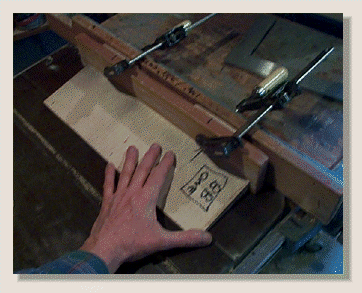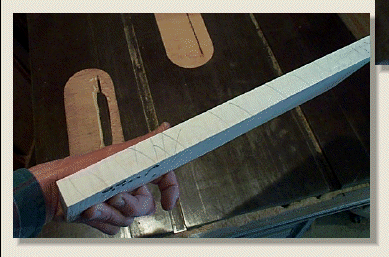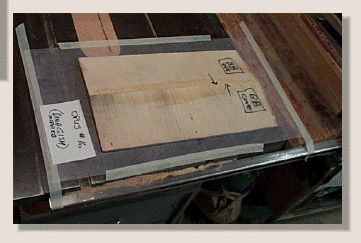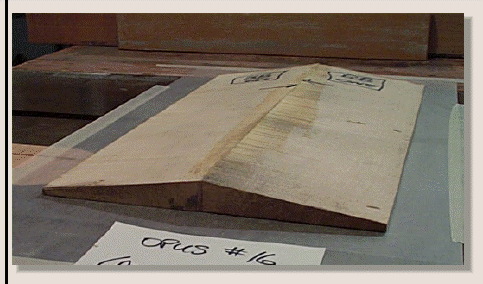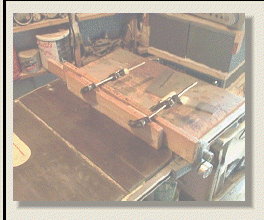Modified 9/ 2017
Page O16C_5
The next step is to get an exact 90 degree glue-joint edge angle, so a sanding board is clamped to the fence of the tabel saw.
The plate half is then hand sanded against the stationary sanding board to get an exact angle.
During this process, I mark the edge with pencil hash lines so I can see the progress of sanding.
Here I am using the cast iron table of the saw as a glue-up assembly board. First a piece of waxed paper is taped down flat with 3/4" masking tape (3M is a good brand).
Then the top wood is warmed to about 100 degrees F. in my warming box, and then hot violin making hide glue (@ 150* F) is brushed on to both edges. Then the two pieces are laid on waxed paper and rubbed tightly together into position and held clamped with hand pressure for about one minute, then carefully released to dry in place overnight.
This is called a 'rubbed joint', and produces a permanent, quality glue joint.


